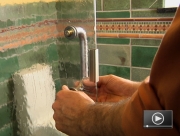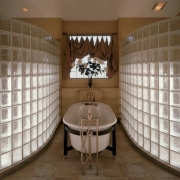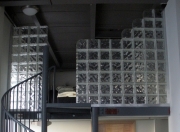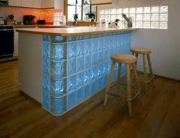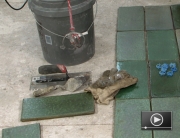How to Install a Glass Shower Enclosure
After tile, one of the most challenging jobs in building a custom shower is installing a glass shower enclosure. There are many options for shower enclosure systems, but to work properly the enclosure has to fit the shower precisely. This often necessitates hiring a professional to fabricate and install a system based on the specific dimensions of your custom shower. However, there are glass shower enclosure systems available that any savvy do-it-yourselfer can install with a few basic hand tools and a little know-how. Join the At Home channelís host, Jeff Wilson, as he demonstrates how to complete a custom shower with a glass enclosure system.
